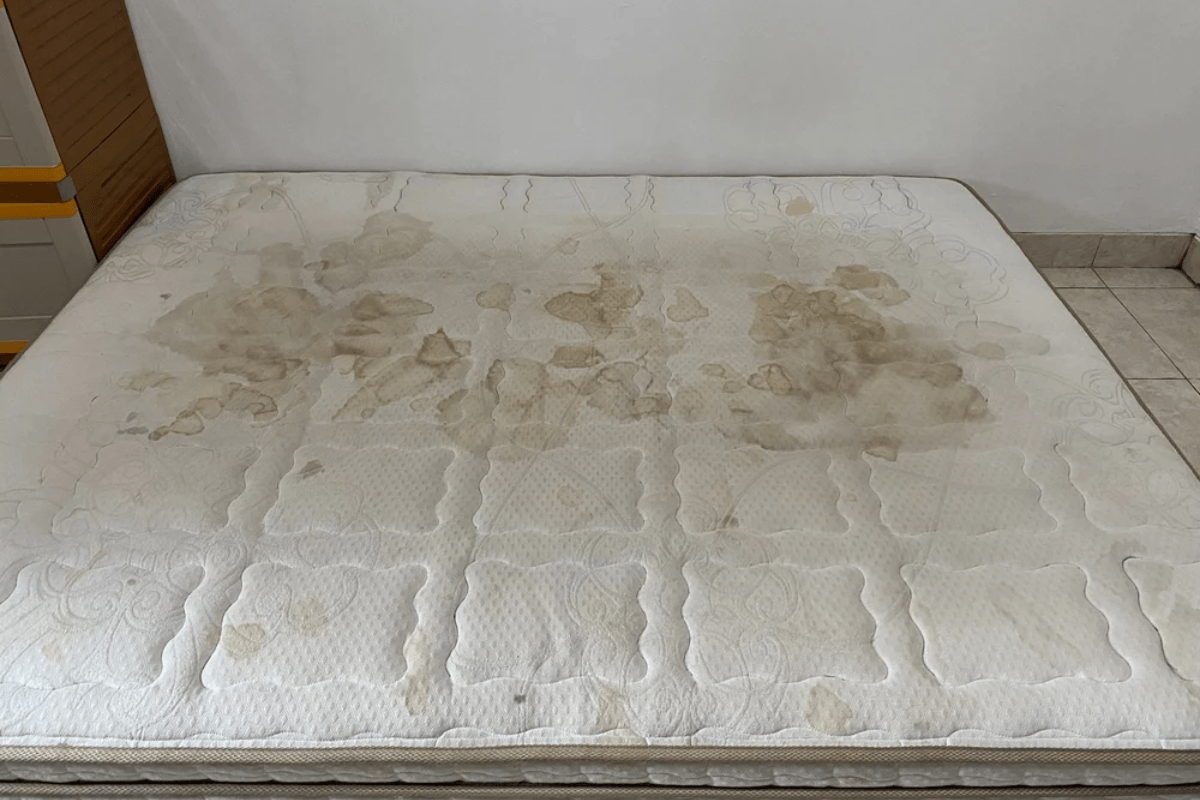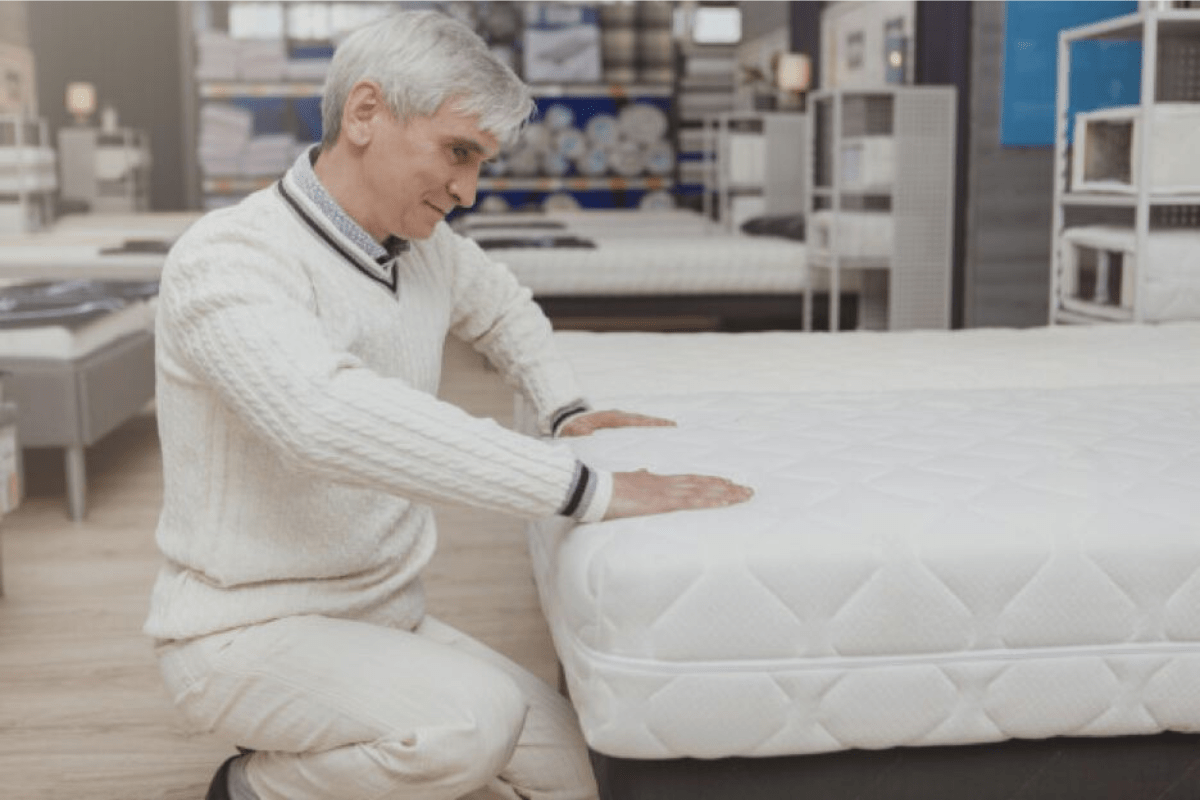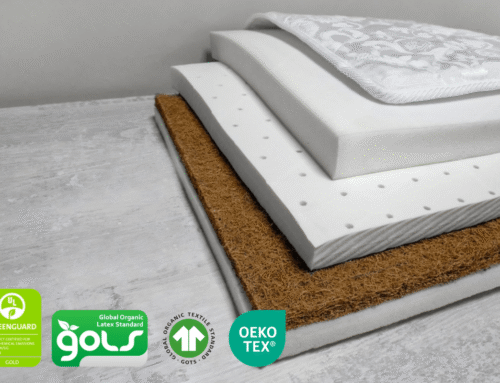Wondering how often you should replace your mattress? You’re not alone. Many people hold onto theirs far longer than they should, even when it’s no longer offering the comfort and support they need. An old, worn-out mattress can lead to poor sleep, body aches, and even affect your mood. If you’re tossing and turning more than usual, it might be time for an upgrade.
Before you start shopping, it’s worth knowing how much you should spend on a mattress. A good night’s sleep is an investment in your health, and your budget should reflect that. This guide will walk you through everything, including how to choose a mattress that fits your sleep style and needs.
You’ll also discover how long different types of mattresses typically last, the telltale signs it’s time to replace yours, and some easy tips to help extend its life. Let’s get your sleep back on track.
Key Takeaways
- Most mattresses should be replaced every 7–10 years, depending on the material and how well you care for them.
- If you feel dips, lumps, or wake up sore, it’s probably time to say goodbye to your old mattress.
- Mattresses collect dust mites and allergens over time, which can mess with your sleep and health.
- Using a mattress protector and rotating your mattress can help it last longer and feel better.
- Memory foam lasts about 8–10 years, while latex can last 10–15. Innerspring and hybrid beds wear out sooner.

How Long Does a Mattress Last?
How long does a mattress really last? On average, you should think about replacing yours every 7 to 10 years, depending on the type and how well it’s been cared for. But those are just guidelines—if you’re waking up sore or noticing dips and sags, it could be time for a new one, even if it’s only a few years old.
Different mattress types have different lifespans. Innerspring mattresses usually last 6–8 years, while memory foam can stretch to 8–10. Latex mattresses are the most durable, often lasting 10–15 years or more. Hybrid options fall somewhere in between, typically lasting 7–10 years.
Curious what are mattresses made of and why some last longer than others? It often comes down to the bed anatomy—layers of coils, foam, and fabric. And if you’ve ever wondered who invented the mattress, you’re not alone; they’ve come a long way from ancient beds stuffed with straw.
Why Mattress Lifespan Isn’t One-Size-Fits-All
The timeline for replacing your mattress isn’t just about age. How you sleep, sweat, and snooze all matter:
- Heavier people may wear out a mattress faster.
- If you sleep hot, heat can break down foam layers sooner.
- Jumping on the bed or poor support (like broken box springs) can speed up wear.
So while 10 years is a nice round number, your mattress might need replacing earlier — or later — depending on your lifestyle.
Signs Your Mattress Is Worn Out
Not sure if your mattress is on its last leg? Watch for these clear red flags:
- Sagging or indentations, especially where you sleep most
- Waking up sore or stiff in the neck, back, or hips
- Tossing and turning more than usual
- Creaking or noise from springs or the foundation
- Allergy flare-ups from trapped dust, mold, or allergens
If you’ve checked more than one of these, it’s probably time to start shopping. Still unsure? One of the most overlooked signs you need a new mattress is simply not sleeping as well as you used to. If you wake up feeling unrested, your mattress may no longer be doing its job.
And timing your purchase right can make a difference. The best time to buy a mattress is usually during major sales events like Presidents’ Day, Memorial Day, or Black Friday, when big discounts and deals are common. So if your sleep has taken a hit, don’t wait. Your future well-rested self will thank you.
How a Bad Mattress Affects Your Health
Sleeping on an old mattress doesn’t just make you cranky. It can actually hurt your health:
- Poor spinal support can lead to chronic pain
- Saggy spots cause poor posture while you sleep
- Dust mites and mold can trigger asthma or allergies
- Interrupted sleep can increase stress, weight gain, and mood swings
Your mattress is where your body rests and recovers. If it’s failing you, it’s worth fixing. One factor that plays a big role in how well a mattress supports your health is what it’s made of. There are several common mattress materials—like memory foam, latex, innerspring coils, and hybrid combinations—each offering different levels of support, breathability, and durability.
Knowing what’s inside your mattress helps you choose one that’s better for your body and sleep style. Whether you’re shopping for better back support or allergy-friendly options, understanding these materials is a smart step toward healthier sleep.
Can You Extend a Mattress’s Life?
With a little love and maintenance, you can help your mattress last longer. Try these:
- Use a mattress protector to block sweat, spills, and dust
- Rotate your mattress every 3–6 months
- Avoid sitting on the edges
- Make sure it’s on a strong, supportive base
- Keep pets off the bed if possible (sorry, Fluffy!)
These little steps can add years to your mattress’s lifespan.

How to Know If Your Mattress Needs Replacing or Just Flipping
Before you rush out to buy a new mattress, take a moment to see if yours can be revived. Some mattresses, especially older two-sided models, are designed to be flipped—giving you a fresh surface to sleep on and potentially extending their life. Foam or latex beds might feel better with the addition of a quality mattress topper, adding extra cushioning and support where it’s needed most.
If you have a modular or DIY mattress, a layer exchange could be an option, allowing you to swap out worn components without replacing the whole thing.
However, if your mattress has deep sagging, broken springs, or it’s just been around too long, no flip or quick fix will save it. Sometimes, the best solution is simply starting fresh with a new bed that supports your body the way it should. Your sleep is worth it.
What If Your Mattress Is Still Under Warranty?
That’s a great question and one a lot of people forget to ask. A warranty can be helpful, but it typically only covers specific defects, not everyday wear and tear. You might qualify for a replacement if your mattress has noticeable sagging, usually deeper than 1.5 inches, or whatever your warranty policy states—or if there are clear defects in the materials, stitching, or construction.
However, if your mattress is simply uncomfortable, worn down from years of use, or no longer giving you restful sleep, the warranty likely won’t cover it. In that case, it’s probably time to start looking for a new one.
If you value quality and longevity, consider checking out mattresses made in the USA. They often follow higher manufacturing standards, which can translate to better durability and support. Even if a warranty doesn’t come through, investing in a better mattress now can pay off in comfort later.
What Happens If You Don’t Replace It?
Hanging onto an old mattress too long can lead to:
- Lower sleep quality and fatigue
- Pain and stiffness that lasts all day
- Dirty buildup of sweat, dust, and skin cells
- Wasted money trying to fix it with toppers or pads
Sleep is essential. You wouldn’t drive on worn-out tires — don’t sleep on a worn-out bed.

How to Pick a New Mattress When It’s Time
Ready to upgrade? Here’s what to look for in a new mattress:
- Choose materials that match your comfort style (foam, latex, coils)
- Shop with local or online specialty brands, not just big chains
- Look for full transparency on materials used
- Test beds in store if possible, or buy from brands that allow layer exchanges
Pro tip: Avoid getting stuck in the “sale trap” — you want quality, not gimmicks.
Final Thoughts: Listen To Your Body
At the end of the day, your body always knows what it needs and when it comes to your mattress, it pays to listen. If your bed is over seven years old and you’re not sleeping well, that’s your first clue. Waking up sore, stiff, or more tired than when you went to bed? Noticing lumps, sagging spots, or squeaky springs? Those are all signs your mattress might be past its prime.
It’s easy to put off replacing it, especially since it feels like a big purchase. But getting quality sleep impacts everything—your mood, your focus, even your overall health. A good mattress is more than just a comfy place to lie down; it’s the foundation of better nights and brighter days.
So don’t ignore the signs. If your mattress isn’t holding up its end of the bargain, it might be time to give your body the upgrade it deserves.
Frequently Asked Questions
One Comment
Comments are closed.








[…] how often you should replace your mattress for better […]